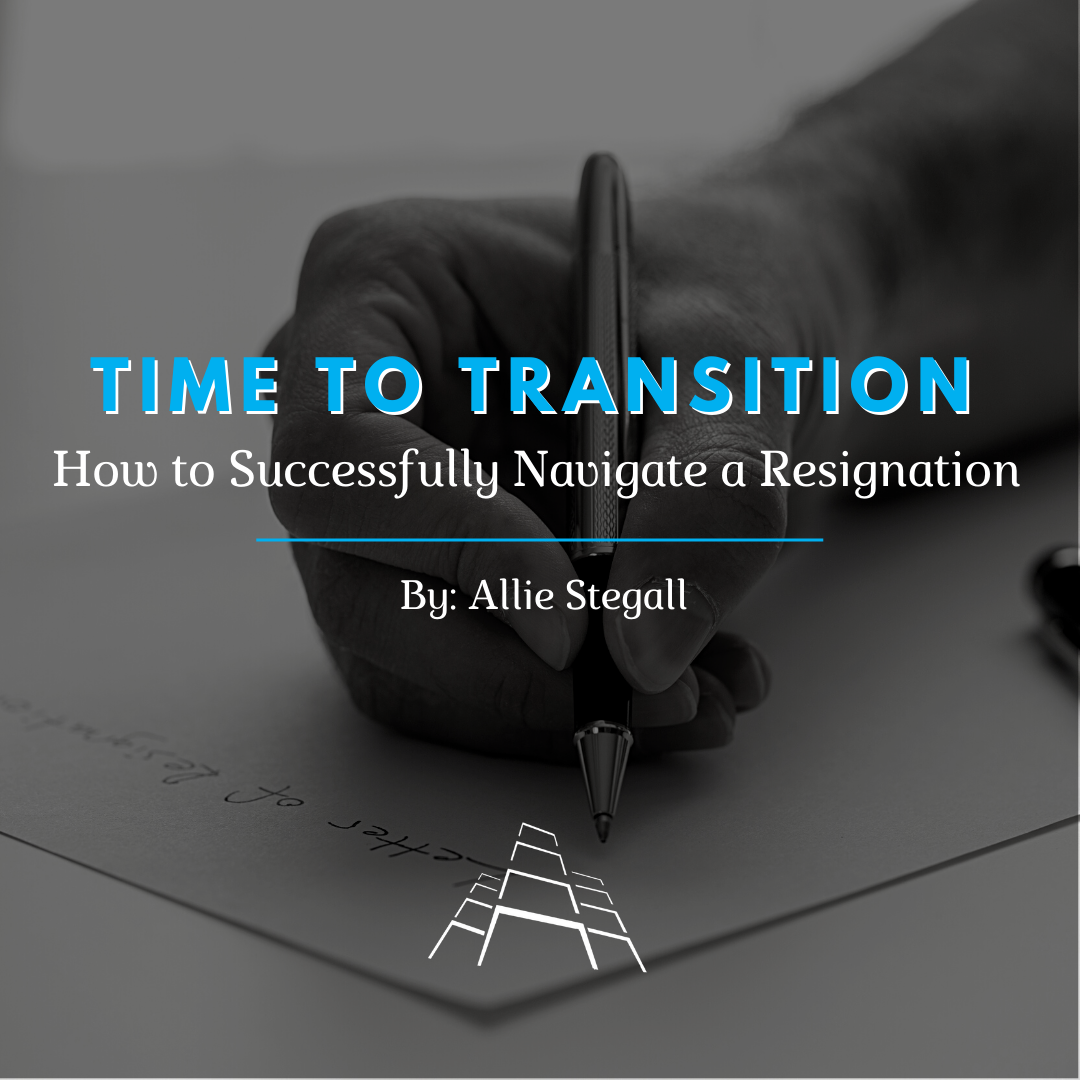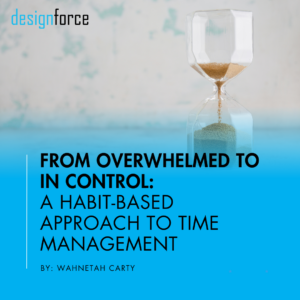Transitioning to a new position is an exciting and fulfilling decision. The process leading up to this moment may have been a long one and maybe wasn’t expected on the immediate horizon. While change can be daunting, following your career values and understanding career satiation will undoubtedly guide you in the best direction for your profession, and with that, your happiness.
So while this time can be bittersweet, this transition symbolizes getting to a point in your career and technical ability where you are recognized for your expertise. Be excited! Here are simple steps to ensure this transition happens smoothly and professionally.
Inform
While this is typically seen as a scary or uncomfortable conversation, resigning and informing your team of your departure is the first step. This conversation should be set up as soon as you have confirmation from the other company to allocate more time towards your transition plan. At DesignForce, we recommend this conversation be in person, for 15 minutes. Go in with a plan, and have your resignation letter ready beforehand. For the conversation itself, we recommend following the three “B’s.” Be brief, be bold, and be grateful.
Brevity is your friend in this conversation. The interaction should be long enough to inform of your plan but concise enough to avoid getting side-tracked. Be bold and be resolute in your decision. You’ve thought long and hard regarding your departure and are excited for this next step in your career. Express gratitude for your team and highlight how the firm has enabled you to get to this point in your career.
Plan & Handoff
It is a common courtesy to allow at least two weeks of notice before your departure. Once your manager and team are informed, it is crucial to follow through on your responsibilities and deliverables. To ensure the smoothest transition, communicate with your colleagues the tasks you will finalize and gather all needed information your team will need to take over in your place. Ensure communication is concise and clear, as this is vital during the handoff process. If you are in a position to help train a successor, take the time during the two week transition period to help familiarize that person with the organization, projects, and essential information they will need to take over.
Navigating a Counter-Offer:
Many resignation conversations include discussion of a counteroffer. While the idea may seem enticing, the truth of the matter is, counteroffers have poor short and long-term outcomes for both employees and the firm. As statistics show, 9 out of 10 candidates who accept a counteroffer are not still with the same firm a year later. While there are many reasons why accepting a counteroffer is ill-advised, one example is a counteroffer does not speak to the underlying motivation for leaving. While it may feel like it addresses any monetary disparity, it does not address other career values the employee may be after – think career growth or a shorter commute. To avoid this conversation, when informing a supervisor of your departure, you can highlight that a counteroffer will not be entertained.
Time for yourself
As part of a successful transition period, take time for yourself before making this jump. By allowing yourself time to relax, you can refocus your energy on putting your best foot forward as you join the new organization. Change can be stressful. Historically, people fear change due to the unknown. Here at DesignForce, we advise approaching change openly to allow yourself to feel the excitement of what is to come.
While change may be daunting, change with a strategic plan forward is exciting. You’ve put in the hard work, now start this new chapter of your career ready to learn, ready to engage, and ready to operate at the highest level.

Related Posts
Let's learn together.
Stay inspired and in the know on all things A|E|C.
Sign up for our monthly newsletter.










